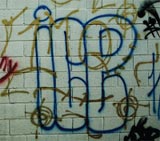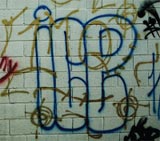
Like Gang Busters
Gangs are a growing security threat within our own borders
- By Thomas W. Leo, CPP
- Jun 01, 2008
 Most people who read the newspaper or pay any
attention at all to what is happening are aware
of the porosity of our borders. People also are
aware that the current administration, the two major
political parties and Congress seem unwilling to do anything
about it.
Most people who read the newspaper or pay any
attention at all to what is happening are aware
of the porosity of our borders. People also are
aware that the current administration, the two major
political parties and Congress seem unwilling to do anything
about it.
The media covers the sensational aspects of the problem,
usually due to the crimes involved; however, few, if
any, concrete, workable solutions are offered—just a lot
of hand-wringing.
Recently, I watched a program on television titled
“Prison Nation,” which devoted a lot of time to gangs
and their subcultures. It is safe to presume that readers
are affected by gang members in their workplaces or
their neighborhoods. In fact, if you know what to look
for, you might be surprised at what you find.
Mara Salvatrucha, the largest and most dangerous
international gang, is plaguing the streets of America in
at least 33 states, including the District of Columbia,
with up to 10,000 members.
Also known as MS-13, Mara Salvatrucha is a
Salvadoran gang with ties to other Central American
countries, but the majority of its current operations are
in the United States. Although there is no concrete evidence
of a formal association, al-Qaida has reportedly
been meeting with MS-13 in Central America to exploit
its vast, established networks for smuggling weapons
and drugs into the United States.
Recently, the Justice Department began a nationwide
crackdown on gangs, arresting more than 1,000
gang members, more than half of whom were affiliated
with MS-13.
Homeland Security Secretary Michael Chertoff
announced several months ago that gangs pose a significant
threat to homeland security. Law enforcement officials
unanimously list MS-13 as the most dangerous and
well-organized gang operating in the United States.
Their threat, the danger posed to businesses and citizens,
is of a criminal nature via theft, drugs, extortion
and much more.
MS-13 can supply some extreme muscle for those
willing to pay for the service, and members’ crimes run
the full spectrum of criminal activities. Many of their
members are former guerillas from the Salvadoran
Farabundo Marti National Liberation Front, as well as
members of U.S.-trained “death squads” from El
Salvador’s civil war in the 1970s and 1980s. They have
expertise in improvised munitions, raids and other insurgency/
counterinsurgency skills honed by years of conflict
and expert instruction.
FBI agent John Lanata, in an October 1998 article in
Law Enforcement Technology, said most gang members
can be categorized as hard-core, associate or peripheral
members. The hard-core member lives for the gang; it
constitutes his whole identity, his whole life.
The associate member is not as involved and has
another life, other people and things he values ahead of
the gang.
Peripheral members are younger kids who live in the
neighborhood, on the fringe of the gang. Women also are
becoming an increasing percentage of gang membership.
Members of gangs have been described as sociopathic
or antisocial. They live by standards that are much different
from those of the American public. Pride, notoriety
and money are important motivating factors, which
also often result in violent acts at the least sign of disrespect,
such as maintaining eye contact with a member.
Lanata said a hard-core gang member constantly feels
the need to prove his manliness to himself and other
gang members.
Membership in a gang fulfills a need that the individual
cannot or is unwilling to fulfill in normal society.
A 2007 Justice Department survey indicated there
were approximately 30,000 gangs in the United States,
with 800,000 known members within the 50 states.
Gangs are territorial; they support themselves by selling
drugs, shoplifting or stealing, impacting the security
and law enforcement professions.
If you feel that there is a gang presence in your area
or if you see a lot of graffiti—this may be an indication
of gangs marking their turf—you are strongly encouraged
to contact local law enforcement earlier, rather
than later. Contact your local police department and
possibly the FBI, since they have the law enforcement
lead on this problem.
Through government mandate, the FBI maintains the
official National Gang Intelligence Center. However, it
also receives information and intelligence from the Drug
Enforcement Agency; Bureau of Prisons; Bureau of
Alcohol, Tobacco and Firearms; and Immigration and
Customs Enforcement.
Some of the larger, better-known gangs and their
identifying colors and symbols are:
• Latin Kings—Yellow and black
• The Bloods—Black and red
• The Crips—Black and navy blue
• The Netas—White, black and red
• Zulu Nation—Outline of Africa
• MS-13—White and blue
Colors are normally displayed in the form of beads or
bandanas. If you notice people—mostly male—wearing
these colors in or near your place of business, be especially
watchful.